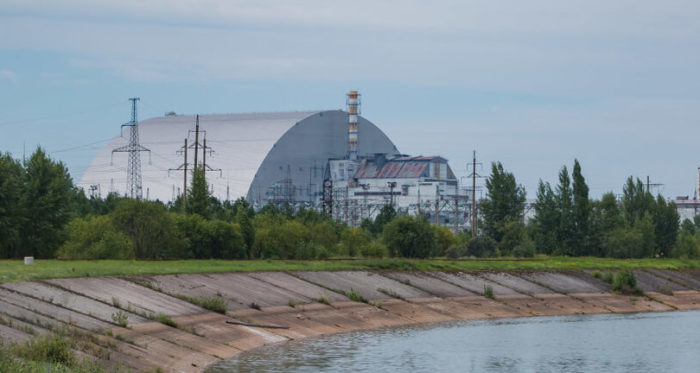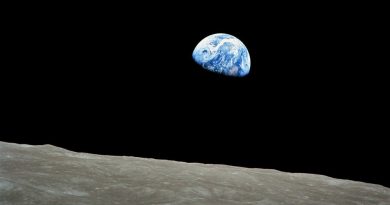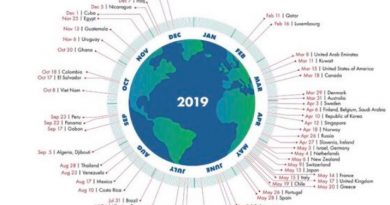Fossil Fuel disasters: 10 of the Biggest
 A special dome covering a reactor at Chernobyl
A special dome covering a reactor at Chernobyl
Fossil fuel based energy sources get a lot of coverage for their contribution to pollution, and the long-term effects on the environment, now being felt acutely. These fuels, while powering the biggest and most extended industrial revolution in human history, do have other risks too. Accidents involving them can be deadly, unlike say solar, wind or even biomass-powered energy. If you need any reminding, here are 10 of the biggest disasters to jog your memory.
1. Jharia Coalfield Fires
The Jharia coalfield in Bihar is an exclusive storehouse of prime coking coal in the country, consisting of 23 large underground and nine large open cast mines. The history of coal-mine fires in Jharia coalfields can be traced back to 1916 when the first fire was detected. At present, more than 70 mine fires are reported from this region, seemingly burning for decades. More than 37 million tons of coal, worth billions of dollars, have been lost to fires at Jharia so far, and 1.4 billion more metric tonnes are inaccessible because they are blocked by fires. This being India, the impact on the quality of life for people in the region remains untracked, although you can be sure that a very high cost has been paid by them in terms of health, livelihood and lives lost.
2. Chernobyl Explosion
The April 1986 disaster at the Chernobyl Anchor nuclear power plant in Ukraine was the product of a flawed Soviet reactor design coupled with serious mistakes made by the plant operators. The accident destroyed the Chernobyl 4 reactor, killing 30 operators and firemen within three months and several further deaths later. The Chernobyl disaster was a unique event and the only accident in the history of commercial nuclear power where radiation-related fatalities occurred. Eventually, not only has the disaster knocked out the possibility of any human inhabitation in the exclusion zone of 30 km or 2600 square km, the long-term effect of the radiation has affected well over 300,000 ho have been resettled, besides millions who continue to live at risk in the area beyond the exclusion zone.
3. Exxon Valdez Oil Spill
The Exxon Valdez oil spill was another man-made disaster that occurred when the Exxon Valdez, an oil tanker owned by the Exxon Shipping Company, spilled 11 million gallons of crude oil into Alaska’s Prince William Sound on March 24, 1989. As the oil slick spread, the ecosystem consisted of a variety of marine and other species was under threat. It is estimated that almost 250,000 seabirds, 2,800 sea otters, up to 300 harbor seals, 250 bald eagles, and at least 22 killer whales were killed in this deadliest accident. Some reports estimated the total economic loss from the Exxon Valdez oil spill to be as much as $2.8 billion.
4. Deepwater Horizon Oil Spill
Deepwater Horizon oil spill of 2010, also called Gulf of Mexico oil spill of 2010 is the largest marine oil spill in history caused by an explosion on April 20, 2010, on the Deepwater Horizon oil rig—located in the Gulf of Mexico and its subsequent sinking on April 22. It is considered to be the largest marine oil spill in the history of the petroleum industry. Thousands of birds, mammals, and sea turtles were plastered with leaked oil. Owned by BP, this spill continues to leak oil on the sea floor to this day!
5. Iraqi Oil Spill
Between five and 10 million barrels of oil poured into the Persian Gulf starting in the January of 1991 when Iraqi troops, retreating from their occupation of Kuwait, set fire to desert oil wells and opened the valves on oil rigs and pipelines. The apparent strategic goal was to foil a potential landing by US Marines. This spill is one of the first times in military history where a natural resource and specifically pollution was used as a tactic of war. A major groundwater aquifer, two-fifths of Kuwait’s entire freshwater reserve, remains contaminated to this day. The slick reached a maximum size of 101 miles (160 km) by 42 miles (68 km) and was 5 inches (13 cm) thick in some areas.
6. Kuwait Oil Fires
Just before the conclusion of the Gulf War, more than 800 wells rigged with explosives were ignited by the Iraqi forces, out of which more than 650 wells burned with flames for several months and the remainder gushed oil forming lakes and pools. An estimated 1.0 to 1.5 billion barrels of oil were released into the environment. Which makes you wonder at the lunacy of it all.
7. Benxihu Coal Mining Explosion
Referred to as the worst disaster in the history of coal mining, Benxihu colliery mining disaster, occurred on April 26, 1942, in a coal mine at Benxi, Liaoning province, China, killing 1,549 Chinese miners. A Gas explosion in one of the shafts sent flames bursting out of the entrance. It took 10 days to clean out the shaft as corpses were carried out in carts to a mass grave. Many of the victims were burned beyond recognition. After the disaster, the mine continued to be operated by the Japanese occupiers until August 1945, when the miners took control of the site following the Japanese surrender. However, the Chinese disaster story with coal doesn’t end with the Japanese defeat in World War 2.
China currently has the largest number of coal-mining fatalities of any country, accounting for about 80% of the world’s total, although it produces only 35% of the world’s coal. Between January 2001 to October 2004, there were 188 accidents that had a death toll of more than 10, about one death every 7.4 days. According to official figures, at least 3,200 people died in China’s mines in 2008. The actual number could be even higher, as the Chinese government is suspected of covering up some accidents. Most accidents are blamed on a failure to follow safety regulations, including adequate ventilation and available fire control equipment.
8. Soma Coal Mine Disaster
On 13 May 2014, an explosion at Eynez coal mine in Soma, Manisa, Turkey, caused an underground mine fire, which burned until 15 May. The explosion killed 301 workers, injured another 80, and trapped nearly 600 workers in the mine. Most of the victims died of carbon monoxide poisoning.
9. Piper Alpha Disaster
Piper Alpha was an oil production platform in the North Sea approximately 120 miles (190 km) north-east of Aberdeen, Scotland, that was operated by Occidental Petroleum (Caledonia) Limited. It began production in 1976, initially as an oil-only platform but later converted to add gas production. Late in the evening of 06 July 1988, a series of explosions ripped through the Piper Alpha platform in the North Sea. Engulfed in the fire, over the next few hours most of the oil rig topside modules collapsed into the sea. 167 men died and many more were injured and traumatized. The world’s biggest offshore oil disaster affected 10% of UK oil production and led to financial losses of an estimated £2 billion.
10. Guadalajara Sewer Explosions
A series of ten explosions took place on April 22, 1992, in the downtown district of Analco Colonia Atlas in Guadalajara city, Mexico. Numerous gasoline explosions in the sewer system and fires over four hours destroyed 8 kilometers of streets. The reported number of people killed was about 252 people although there are claims of almost 1000 deaths. The series of explosions was caused by a gas leak, the warning signs of which were ignored by the Mexican authorities and the national oil company.





How is Chernobyl on the list? This is a list of FOSSIL fuel disasters.